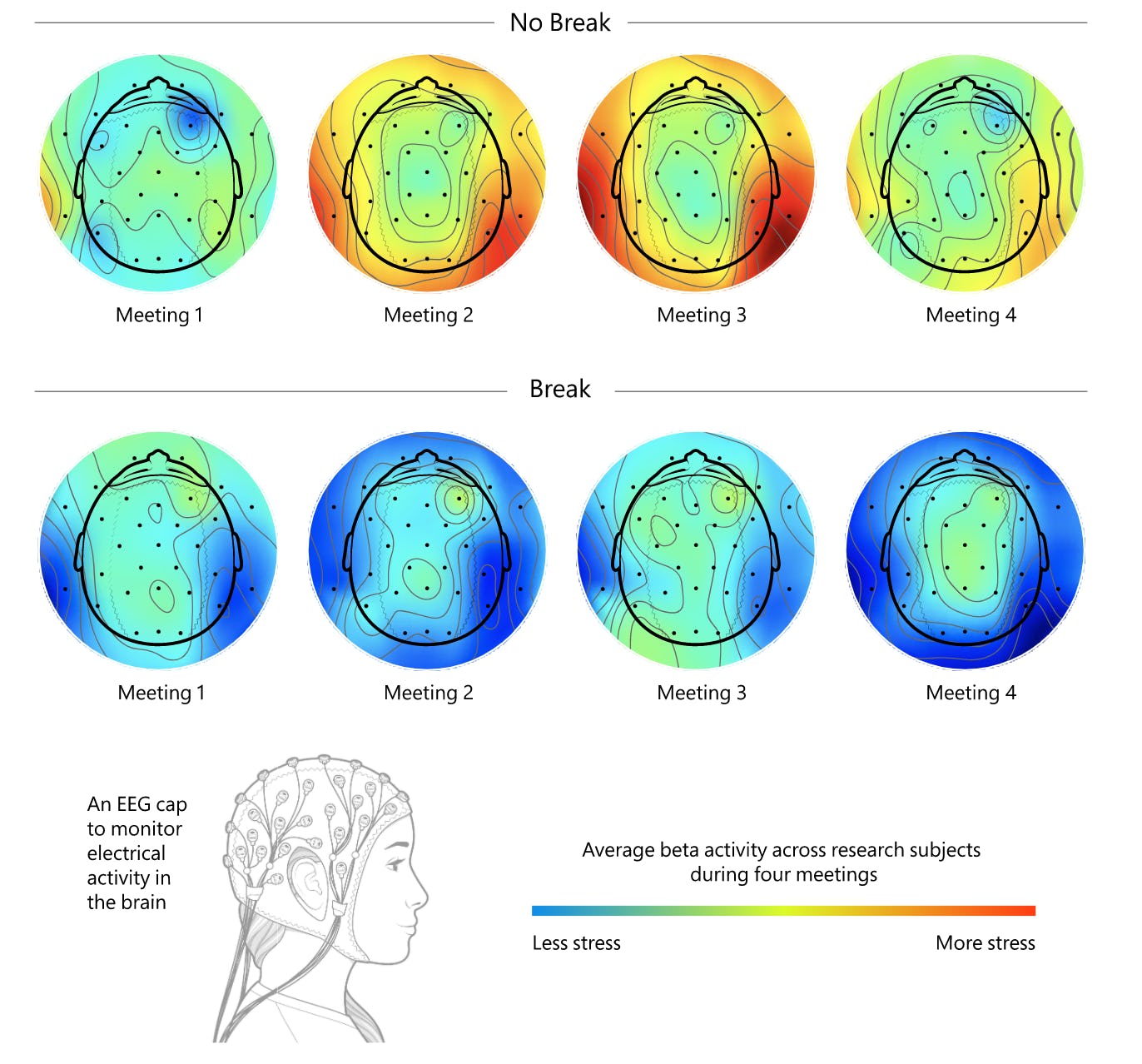By changing how we approach meetings and how we run meetings, we can connect and communicate more effectively – and reduce stress and fatigue.
Microsoft’s Human Factors Lab recently conducted a study in which 14 people took part in video meetings while wearing electroencephalogram (EEG) equipment—a cap to monitor the electrical activity in their brains. One week, the study volunteers participated in four half-hour meetings that were scheduled back-to-back. Each meeting was devoted to different tasks—designing an office layout, for example, or creating a marketing plan. The following week, the study volunteers participated in four half-hour meetings that were interspersed with 10-minute breaks. During the 10 minutes breaks, the participants meditated with the Headspace app.
The study found that when the study volunteers participated in back-to-back meetings, the average activity of beta waves—those associated with stress—increased over time. At the same time, brainwave patterns during back-to-back meetings showed negative levels of frontal alpha asymmetry, which correlates to lower engagement during the meeting.
When participants had meditation breaks, the average level of beta waves held steady through four meetings, with no buildup of stress even as four video calls continued, and brainwave patterns showed positive levels of frontal alpha asymmetry correlating with engagement and focus.
 “What makes this study so powerful and relatable is that we’re effectively visualizing for people what they experience phenomenologically inside,” says Michael Bohan, senior director of Microsoft’s Human Factors Engineering group. “It’s not an abstraction — quite the opposite. It’s a scientific expression of the stress and fatigue people feel during back-to-backs.”
“What makes this study so powerful and relatable is that we’re effectively visualizing for people what they experience phenomenologically inside,” says Michael Bohan, senior director of Microsoft’s Human Factors Engineering group. “It’s not an abstraction — quite the opposite. It’s a scientific expression of the stress and fatigue people feel during back-to-backs.”
The take-away from this study is clear – back-to-back meetings need to stop. Not only are back-to-back meetings causing fatigue and stress, but they are also negatively impacting engagement and focus.
Three simple actions you can take are:
- Block your calendar Schedule breaks throughout the day.
- Change your default meeting length Change the default meeting length in your calendar from 1 hour to 50 minutes and from 30 minutes to 20 minutes.
- Be intentional Before you schedule a meeting, ask yourself if you really need to schedule a meeting and, if so, who really needs to attend.
By changing how we approach meetings and how we run meetings, we can connect and communicate more effectively – and reduce stress and fatigue.







